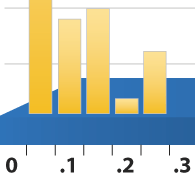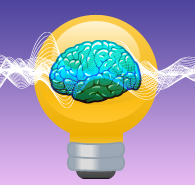Archive for the ‘Application of Neurofeedback’ Category
Wednesday, March 10th, 2010
 The first convincing evidence for EEG feedback efficacy in the management of pathophysiology was with regard to generalized seizures. The early work by Sterman, Lubar, as well as the subsequent follow-up by others, therefore remains a crucial point of reference for the various feedback techniques that have built upon the early protocol of SMR reinforcement combined the theta-band and high-beta band inhibition. Remarkably, the essential features of the early approach have been retained in the various evolutionary pathways that have emanated from the early work. This essential similarity has perhaps obscured other aspects of the training approach that have changed substantially over time, the significance of which may not have been fully appreciated except in reflection. In this newsletter we consider some of these changes and their implications generally, as well as for seizure management in particular. The first convincing evidence for EEG feedback efficacy in the management of pathophysiology was with regard to generalized seizures. The early work by Sterman, Lubar, as well as the subsequent follow-up by others, therefore remains a crucial point of reference for the various feedback techniques that have built upon the early protocol of SMR reinforcement combined the theta-band and high-beta band inhibition. Remarkably, the essential features of the early approach have been retained in the various evolutionary pathways that have emanated from the early work. This essential similarity has perhaps obscured other aspects of the training approach that have changed substantially over time, the significance of which may not have been fully appreciated except in reflection. In this newsletter we consider some of these changes and their implications generally, as well as for seizure management in particular.
The common thread in most modern neurofeedback approaches is the combination of a reinforcement strategy on one EEG frequency or another and an inhibit strategy based on detection of excursions into dysregulation. Some issues relating to the inhibit side have been relegated entirely to the software, thus removing them from ready visibility. Artifact detection and the division of labor between that and the conventional inhibits is a case in point. Specific targeting strategies typically remain to the discretion of the practitioner, as for example with respect to thresholding, placement, and frequency band selection. The general thrust over time has been to broaden the “field of view” of this EEG-based disregulation detector, mainly with respect to the frequencies being targeted, but sometimes also in terms of placement. Multi-channel instruments allow independent choice of placement for the reward and the inhibit strategies. Fortuitously, the various inhibit strategies being actively used—-though differing significantly from each other—-have not been wrapped up in much controversy.
(more…)
Posted in Application of Neurofeedback, Clinical Methods, Clinical Results, Efficacy, Neurofeedback | No Comments »
Wednesday, December 16th, 2009
 For a number of years now I have been hearing from Leslie Coates in Florida about his work with a top-rated hitter in baseball. For reasons of client confidentiality, I never had a name to go with the story. When reporters would ask us about sports applications, the best story of all had to remain somewhat amorphous. At this year’s ISNR Conference the audience got to hear about the training directly from the person involved, Sean Casey, in a joint presentation with Leslie Coates and Wes Sime. For a number of years now I have been hearing from Leslie Coates in Florida about his work with a top-rated hitter in baseball. For reasons of client confidentiality, I never had a name to go with the story. When reporters would ask us about sports applications, the best story of all had to remain somewhat amorphous. At this year’s ISNR Conference the audience got to hear about the training directly from the person involved, Sean Casey, in a joint presentation with Leslie Coates and Wes Sime.
Sean Casey started out auspiciously in baseball, with a batting average of 0.461 in college at the University of Richmond. He was drafted into the Major Leagues by the Cincinnati Reds ten years ago, and soon after a promising start he was hit in the face by a ball he wasn’t expecting. The bones around the eye socket were broken, and although he tried to keep playing, his batting average hit bottom: 0/30. He was sent back to the minors, where he connected with sports psychologist Wes Sime, with whom he worked for two years.
(more…)
Posted in Application of Neurofeedback, Biofeedback, Conferences, Neurofeedback, Peak Performance | 4 Comments »
Saturday, December 12th, 2009
 The issue of sudden, rapid acceleration in Toyota vehicles presents an interesting case study of how our society approaches rare hazardous events, and a consideration of this history can shed light on how other such instances are handled that are of more direct interest to us here. It turns out that this issue has been with us for some time. About 1000 suspicious acceleration events have been recorded over eight years, with some 19 deaths registered in Toyotas since 2002. The issue of sudden, rapid acceleration in Toyota vehicles presents an interesting case study of how our society approaches rare hazardous events, and a consideration of this history can shed light on how other such instances are handled that are of more direct interest to us here. It turns out that this issue has been with us for some time. About 1000 suspicious acceleration events have been recorded over eight years, with some 19 deaths registered in Toyotas since 2002.
Complaints of sudden, unintended acceleration rose rapidly after Toyota replaced mechanical throttles with electronic controls in 2002. By the time that this problem received significant attention, however, the hypothesis of causation by floor mats interfering with the gas pedal was well entrenched. So that hypothesis continued to be advanced even after it ceased to be very credible. After all, the problem occurred even in vehicles where the floor mats had been removed, and where nothing was engaging the gas pedal (as at a stoplight). As recently as a few months ago, our National Highway Safety Administration saw no reason to inquire beyond the mundane hypothesis involving floor mats. And the recall of 4.2 million cars is majorly targeted to the replacement of gas pedals so that they will be less confused by the floor mats.
(more…)
Posted in Application of Neurofeedback, Autism, Commentary, Neurofeedback | 4 Comments »
Monday, November 23rd, 2009
 Even before the usual fire season got underway in Southern California this year, we had one of the largest fires ever in the Angeles National Forest. It was arson-set, and suspicion is cast on an immigrant who developed mental health issues over the past few years. Just fighting the fire cost the state nearly $100M, and that does not count the resource loss, the loss of carbon capture in future years, the impending flooding damage, etc. Arson is notoriously difficult to prosecute. Fingering an arsonist often involves putting evidence together from a number of instances to detect a pattern. This means that the arsonist is taken out of action late in his career, after a lot of damage has already been done. Further, success in that effort means so little in societal terms. At best it takes one arsonist out of circulation, one from a population pool of 16 million people. Even before the usual fire season got underway in Southern California this year, we had one of the largest fires ever in the Angeles National Forest. It was arson-set, and suspicion is cast on an immigrant who developed mental health issues over the past few years. Just fighting the fire cost the state nearly $100M, and that does not count the resource loss, the loss of carbon capture in future years, the impending flooding damage, etc. Arson is notoriously difficult to prosecute. Fingering an arsonist often involves putting evidence together from a number of instances to detect a pattern. This means that the arsonist is taken out of action late in his career, after a lot of damage has already been done. Further, success in that effort means so little in societal terms. At best it takes one arsonist out of circulation, one from a population pool of 16 million people.
The same holds true for pedophiles. By the time they are apprehended, they have typically already offended against a large number of children. Serial killers are typically also caught only after many years of violence. Again, a pattern needs to be detected before a serial killer can even be hypothesized. Financial skullduggery is usually discovered only after many years, or it reveals itself when it collapses of its own internal contradictions. Of course we find some satisfaction in the prosecution of these criminals, but in the larger scheme of things the remedy is unavailing if justice arrives so late upon the scene. How might things be otherwise?
(more…)
Posted in Application of Neurofeedback, Commentary, Disregulation, Efficacy, Neurofeedback | 3 Comments »
Monday, November 23rd, 2009
 It has happened a number of times now that a high-powered executive or other successful professional has come to our Woodland Hills office for neurofeedback training for one issue or another, or simply for optimum performance training, and confided that they depend on marijuana to get them through. The usual outcome is that their marijuana utilization will drop off as their brains achieve a better state of self-regulation. Anxiety falls off; tension is released; sleep improves; pain subsides; stress tolerance increases. These are not trivial matters. They are in fact collectively life-altering. It has happened a number of times now that a high-powered executive or other successful professional has come to our Woodland Hills office for neurofeedback training for one issue or another, or simply for optimum performance training, and confided that they depend on marijuana to get them through. The usual outcome is that their marijuana utilization will drop off as their brains achieve a better state of self-regulation. Anxiety falls off; tension is released; sleep improves; pain subsides; stress tolerance increases. These are not trivial matters. They are in fact collectively life-altering.
Alternatively, we may only get to hear about the marijuana use after it has ceased, often to the amazement of the clients themselves. They may either have had no intention of giving it up, or they might simply have seen marijuana as indispensable to their well-being. The surprise on their part is matched by the surprise on ours, namely to see just how ready these people are to jettison the marijuana once their system no longer benefits from it particularly. By and large we are not dealing with recreational use here.
(more…)
Posted in Application of Neurofeedback, Commentary, Neurofeedback | 7 Comments »
Monday, November 23rd, 2009
 Up to this point, commentary on Major Hasan has had as much to do with us, the observers, as with Hasan himself, given how little we actually know about him. One wants to be careful not to jump to conclusions prematurely. That may also have been at work early on while Major Hasan was working at the Walter Reed Army Medical Center. The question has been raised as to why his colleagues at Walter Reed did not pick up on the various signs of instability and of mental disturbance in Major Hasan during his years there. Up to this point, commentary on Major Hasan has had as much to do with us, the observers, as with Hasan himself, given how little we actually know about him. One wants to be careful not to jump to conclusions prematurely. That may also have been at work early on while Major Hasan was working at the Walter Reed Army Medical Center. The question has been raised as to why his colleagues at Walter Reed did not pick up on the various signs of instability and of mental disturbance in Major Hasan during his years there.
The professional reluctance to identify Hasan as a problem may very well have been due to the “protective garb” provided him by his status as a psychiatrist. He was one of them. Beyond the simple reluctance to indict a professional colleague, there is also the assumption that such an individual has more resources to “pull himself together” and to conduct his life within acceptable bounds even if he has “issues.” The mental health disciplines have developed from a very rational framework that unsurprisingly places the rational order at the top of our regulatory hierarchy. In the disciplined mind, rationality rules the emotions. The will is unquestionably in charge of our actions.
(more…)
Posted in Application of Neurofeedback, Neurofeedback, Professional Issues, PTSD, Veterans | 4 Comments »
|
|
Subscribe to Email Newsletter
The EEG Info Newsletter circulates via email at least once a month. A variety of topics related to the Neurofeedback / EEG Biofeedback field are covered in over 200 articles.
|
 The first convincing evidence for EEG feedback efficacy in the management of pathophysiology was with regard to generalized seizures. The early work by Sterman, Lubar, as well as the subsequent follow-up by others, therefore remains a crucial point of reference for the various feedback techniques that have built upon the early protocol of SMR reinforcement combined the theta-band and high-beta band inhibition. Remarkably, the essential features of the early approach have been retained in the various evolutionary pathways that have emanated from the early work. This essential similarity has perhaps obscured other aspects of the training approach that have changed substantially over time, the significance of which may not have been fully appreciated except in reflection. In this newsletter we consider some of these changes and their implications generally, as well as for seizure management in particular.
The first convincing evidence for EEG feedback efficacy in the management of pathophysiology was with regard to generalized seizures. The early work by Sterman, Lubar, as well as the subsequent follow-up by others, therefore remains a crucial point of reference for the various feedback techniques that have built upon the early protocol of SMR reinforcement combined the theta-band and high-beta band inhibition. Remarkably, the essential features of the early approach have been retained in the various evolutionary pathways that have emanated from the early work. This essential similarity has perhaps obscured other aspects of the training approach that have changed substantially over time, the significance of which may not have been fully appreciated except in reflection. In this newsletter we consider some of these changes and their implications generally, as well as for seizure management in particular.
 For a number of years now I have been hearing from Leslie Coates in Florida about his work with a top-rated hitter in baseball. For reasons of client confidentiality, I never had a name to go with the story. When reporters would ask us about sports applications, the best story of all had to remain somewhat amorphous. At this year’s ISNR Conference the audience got to hear about the training directly from the person involved, Sean Casey, in a joint presentation with Leslie Coates and Wes Sime.
For a number of years now I have been hearing from Leslie Coates in Florida about his work with a top-rated hitter in baseball. For reasons of client confidentiality, I never had a name to go with the story. When reporters would ask us about sports applications, the best story of all had to remain somewhat amorphous. At this year’s ISNR Conference the audience got to hear about the training directly from the person involved, Sean Casey, in a joint presentation with Leslie Coates and Wes Sime. Even before the usual fire season got underway in Southern California this year, we had one of the largest fires ever in the Angeles National Forest. It was arson-set, and suspicion is cast on an immigrant who developed mental health issues over the past few years. Just fighting the fire cost the state nearly $100M, and that does not count the resource loss, the loss of carbon capture in future years, the impending flooding damage, etc. Arson is notoriously difficult to prosecute. Fingering an arsonist often involves putting evidence together from a number of instances to detect a pattern. This means that the arsonist is taken out of action late in his career, after a lot of damage has already been done. Further, success in that effort means so little in societal terms. At best it takes one arsonist out of circulation, one from a population pool of 16 million people.
Even before the usual fire season got underway in Southern California this year, we had one of the largest fires ever in the Angeles National Forest. It was arson-set, and suspicion is cast on an immigrant who developed mental health issues over the past few years. Just fighting the fire cost the state nearly $100M, and that does not count the resource loss, the loss of carbon capture in future years, the impending flooding damage, etc. Arson is notoriously difficult to prosecute. Fingering an arsonist often involves putting evidence together from a number of instances to detect a pattern. This means that the arsonist is taken out of action late in his career, after a lot of damage has already been done. Further, success in that effort means so little in societal terms. At best it takes one arsonist out of circulation, one from a population pool of 16 million people. It has happened a number of times now that a high-powered executive or other successful professional has come to our Woodland Hills office for neurofeedback training for one issue or another, or simply for optimum performance training, and confided that they depend on marijuana to get them through. The usual outcome is that their marijuana utilization will drop off as their brains achieve a better state of self-regulation. Anxiety falls off; tension is released; sleep improves; pain subsides; stress tolerance increases. These are not trivial matters. They are in fact collectively life-altering.
It has happened a number of times now that a high-powered executive or other successful professional has come to our Woodland Hills office for neurofeedback training for one issue or another, or simply for optimum performance training, and confided that they depend on marijuana to get them through. The usual outcome is that their marijuana utilization will drop off as their brains achieve a better state of self-regulation. Anxiety falls off; tension is released; sleep improves; pain subsides; stress tolerance increases. These are not trivial matters. They are in fact collectively life-altering. Up to this point, commentary on Major Hasan has had as much to do with us, the observers, as with Hasan himself, given how little we actually know about him. One wants to be careful not to jump to conclusions prematurely. That may also have been at work early on while Major Hasan was working at the Walter Reed Army Medical Center. The question has been raised as to why his colleagues at Walter Reed did not pick up on the various signs of instability and of mental disturbance in Major Hasan during his years there.
Up to this point, commentary on Major Hasan has had as much to do with us, the observers, as with Hasan himself, given how little we actually know about him. One wants to be careful not to jump to conclusions prematurely. That may also have been at work early on while Major Hasan was working at the Walter Reed Army Medical Center. The question has been raised as to why his colleagues at Walter Reed did not pick up on the various signs of instability and of mental disturbance in Major Hasan during his years there.
The Rare Event: Toyota, Tasers, and Autism
Saturday, December 12th, 2009Complaints of sudden, unintended acceleration rose rapidly after Toyota replaced mechanical throttles with electronic controls in 2002. By the time that this problem received significant attention, however, the hypothesis of causation by floor mats interfering with the gas pedal was well entrenched. So that hypothesis continued to be advanced even after it ceased to be very credible. After all, the problem occurred even in vehicles where the floor mats had been removed, and where nothing was engaging the gas pedal (as at a stoplight). As recently as a few months ago, our National Highway Safety Administration saw no reason to inquire beyond the mundane hypothesis involving floor mats. And the recall of 4.2 million cars is majorly targeted to the replacement of gas pedals so that they will be less confused by the floor mats.
(more…)
Posted in Application of Neurofeedback, Autism, Commentary, Neurofeedback | 4 Comments »